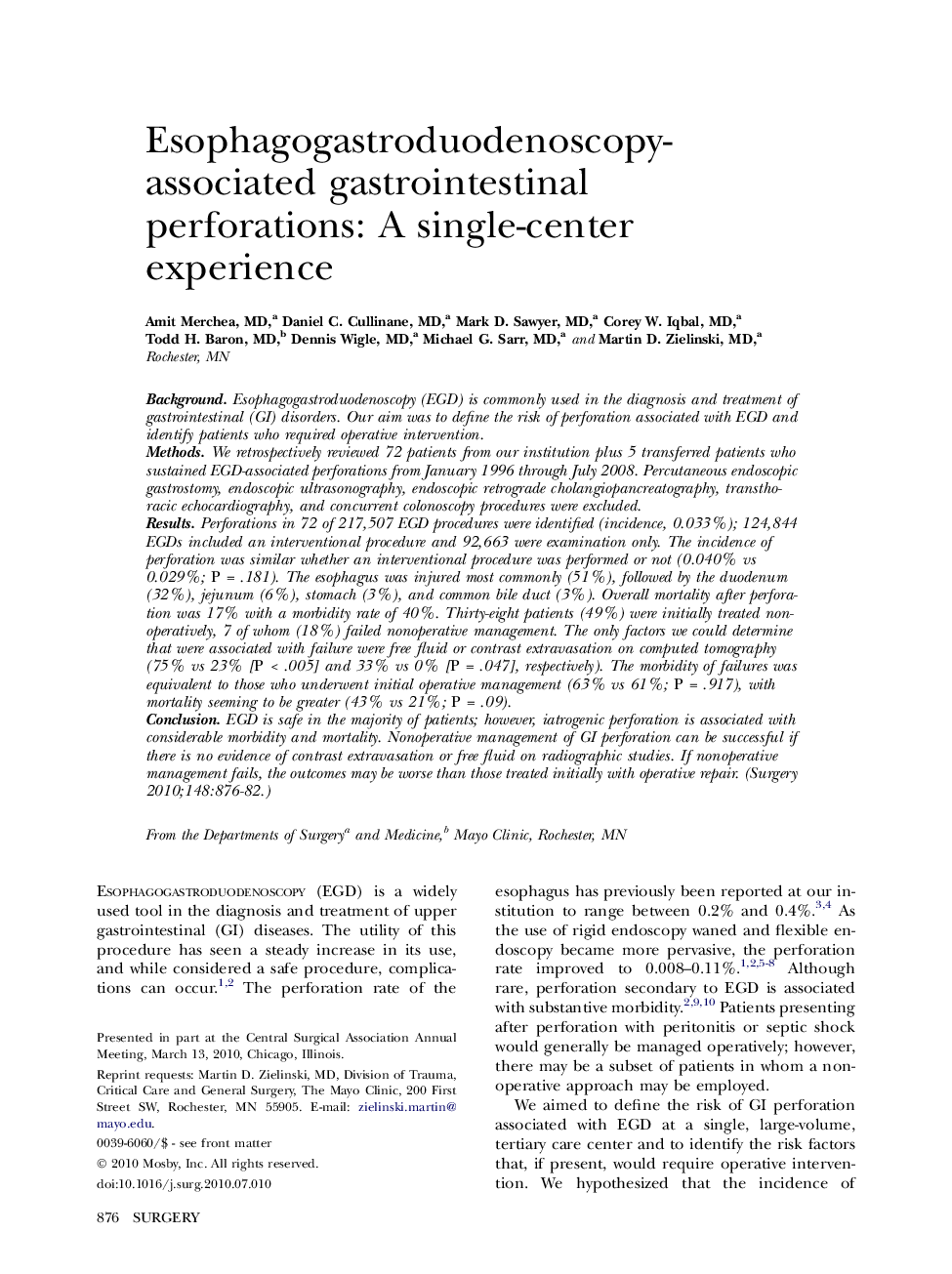| Article ID | Journal | Published Year | Pages | File Type |
|---|---|---|---|---|
| 4309062 | Surgery | 2010 | 7 Pages |
BackgroundEsophagogastroduodenoscopy (EGD) is commonly used in the diagnosis and treatment of gastrointestinal (GI) disorders. Our aim was to define the risk of perforation associated with EGD and identify patients who required operative intervention.MethodsWe retrospectively reviewed 72 patients from our institution plus 5 transferred patients who sustained EGD-associated perforations from January 1996 through July 2008. Percutaneous endoscopic gastrostomy, endoscopic ultrasonography, endoscopic retrograde cholangiopancreatography, transthoracic echocardiography, and concurrent colonoscopy procedures were excluded.ResultsPerforations in 72 of 217,507 EGD procedures were identified (incidence, 0.033%); 124,844 EGDs included an interventional procedure and 92,663 were examination only. The incidence of perforation was similar whether an interventional procedure was performed or not (0.040% vs 0.029%; P = .181). The esophagus was injured most commonly (51%), followed by the duodenum (32%), jejunum (6%), stomach (3%), and common bile duct (3%). Overall mortality after perforation was 17% with a morbidity rate of 40%. Thirty-eight patients (49%) were initially treated nonoperatively, 7 of whom (18%) failed nonoperative management. The only factors we could determine that were associated with failure were free fluid or contrast extravasation on computed tomography (75% vs 23% [P < .005] and 33% vs 0% [P = .047], respectively). The morbidity of failures was equivalent to those who underwent initial operative management (63% vs 61%; P = .917), with mortality seeming to be greater (43% vs 21%; P = .09).ConclusionEGD is safe in the majority of patients; however, iatrogenic perforation is associated with considerable morbidity and mortality. Nonoperative management of GI perforation can be successful if there is no evidence of contrast extravasation or free fluid on radiographic studies. If nonoperative management fails, the outcomes may be worse than those treated initially with operative repair.
